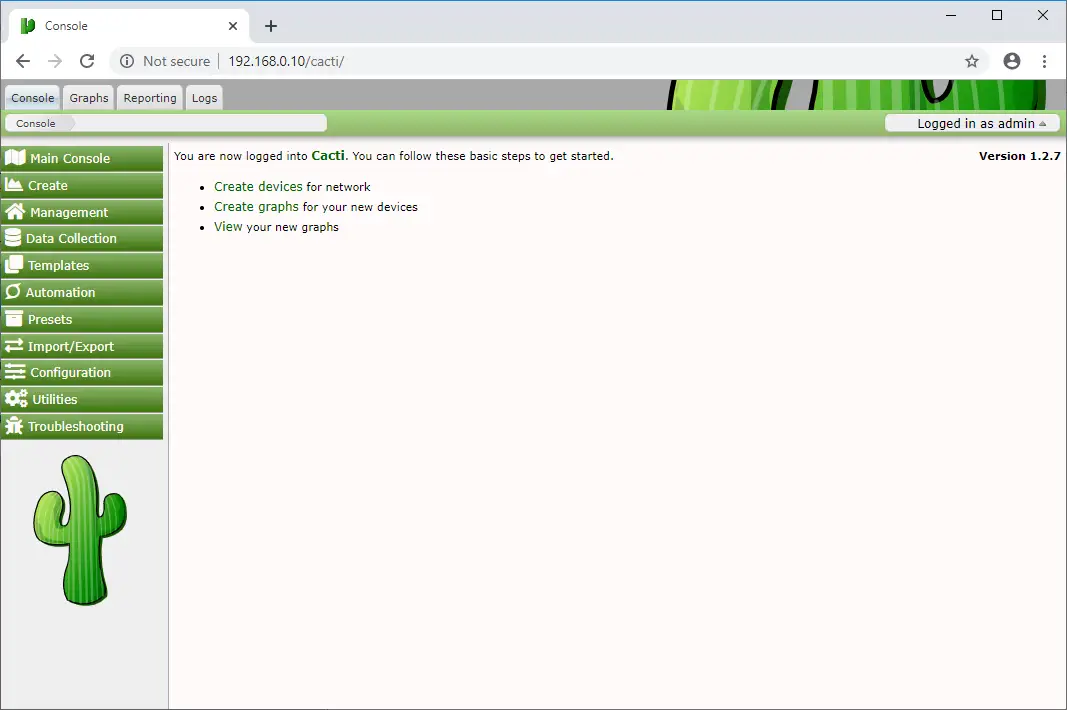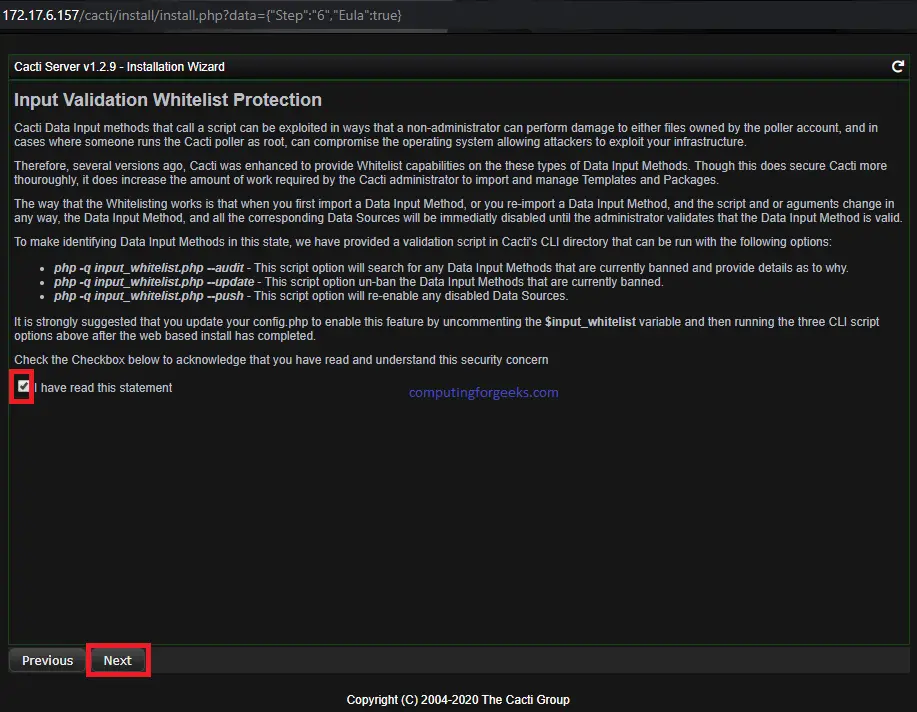

Go to the web installer & follow the instructions by visiting Enter the default credentials as admin for username & password. sudo mysql -u root -p mysql /dev/null 2>&1 Step 9: Cacti Dashboard Now, give the Cacti user access to the MySQL Timezone Database. GRANT ALL PRIVILEGES ON cacti.* TO PRIVILEGES CREATE DATABASE cacti ĬREATE USER IDENTIFIED BY ' Your_password' To make our work easier create with cacti name.

sudo systemctl enable mysqlĬreate a database with name cacti as the demo data also contain database with cacti name. Sudo apt -y install php-cli php-fpm php-json php-pdo php-mysql php-zip php-gd php-mbstring php-curl php-xml php-pear php-bcmath php-gmp php-ldap Step 4: Database ConfigurationĬonfigure the database as we’ve installed it in step 2. Type the given command to install PHP & its required extensions sudo apt -y install php php-common Sudo apt install curl vim acl composer fping git graphviz imagemagick mariadb-client mariadb-server mtr-tiny nginx-full python-memcache python-mysqldb snmp snmpd whois php-snmp rrdtool librrds-perl Step 3: Install PHP & PHP extensions sudo apt install cacti cacti-spine During the installation, you will be asked for the webserver and dbconfig-common configuration. Sudo apt install software-properties-common Now install Cacti and Cacti-spine (Alternative pooler based on C) using the apt command below.


 0 kommentar(er)
0 kommentar(er)
